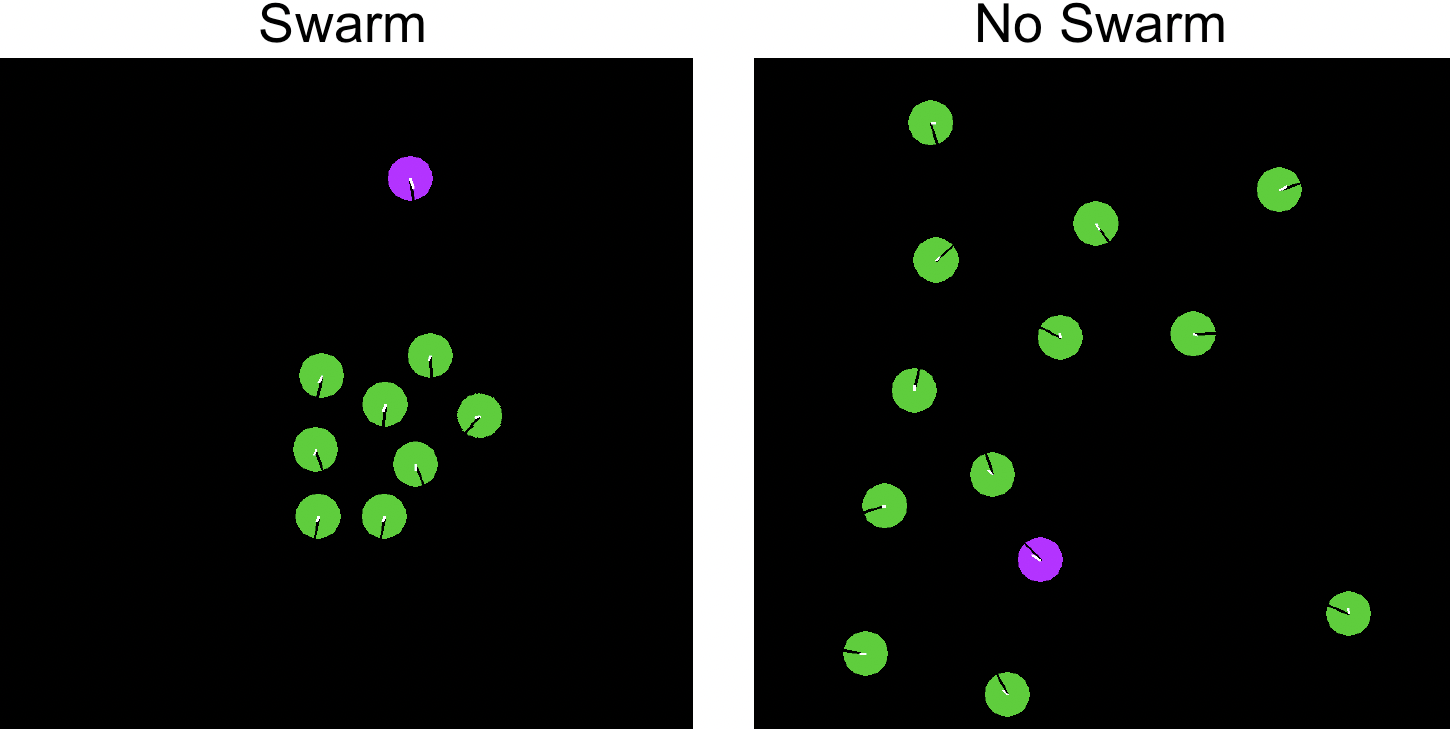Flocking or swarm behavior is a widely observed phenomenon in nature. Although the entities might have self-interested goals like evading predators or foraging, they group themselves together because a collaborative observation is superior to the observation of a single individual. In this paper, we evaluate the emergence of swarms in a foraging task using multi-agent reinforcement learning (MARL). Every individual can move freely in a continuous space with the objective to follow a moving target object in a partially observable environment. The individuals are self-interested as there is no explicit incentive to collaborate with each other. However, our evaluation shows that these individuals learn to form swarms out of self-interest and learn to orient themselves to each other in order to find the target object even when it is out of sight for most individuals.
@inproceedings{ hahnALIFE20,
author = "Carsten Hahn and Fabian Ritz and Paula Wikidal and Thomy Phan and Thomas Gabor and Claudia Linnhoff-Popien",
title = "Foraging Swarms using Multi-Agent Reinforcement Learning",
year = "2020",
abstract = "Flocking or swarm behavior is a widely observed phenomenon in nature. Although the entities might have self-interested goals like evading predators or foraging, they group themselves together because a collaborative observation is superior to the observation of a single individual. In this paper, we evaluate the emergence of swarms in a foraging task using multi-agent reinforcement learning (MARL). Every individual can move freely in a continuous space with the objective to follow a moving target object in a partially observable environment. The individuals are self-interested as there is no explicit incentive to collaborate with each other. However, our evaluation shows that these individuals learn to form swarms out of self-interest and learn to orient themselves to each other in order to find the target object even when it is out of sight for most individuals.",
url = "https://direct.mit.edu/isal/proceedings/isal2020/333/98496",
eprint = "https://direct.mit.edu/isal/proceedings-pdf/isal2020/32/333/1908570/isal a 00267.pdf",
publisher = "MIT Press Direct",
booktitle = "Conference on Artificial Life",
pages = "333--340",
doi = "https://doi.org/10.1162/isal_a_00267"
}
Related Articles
Relevant Research Areas

